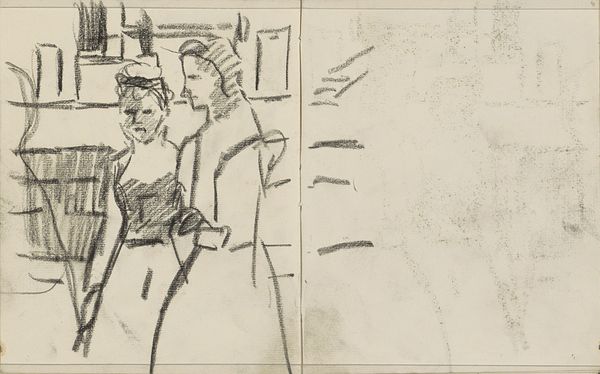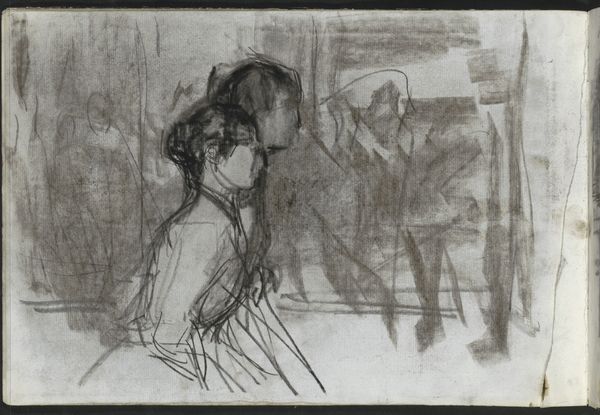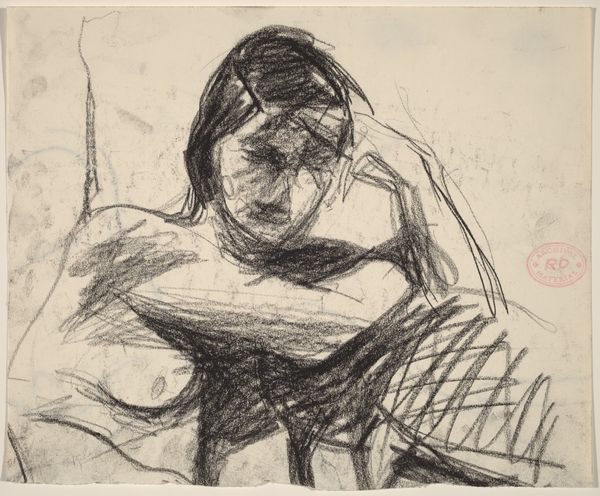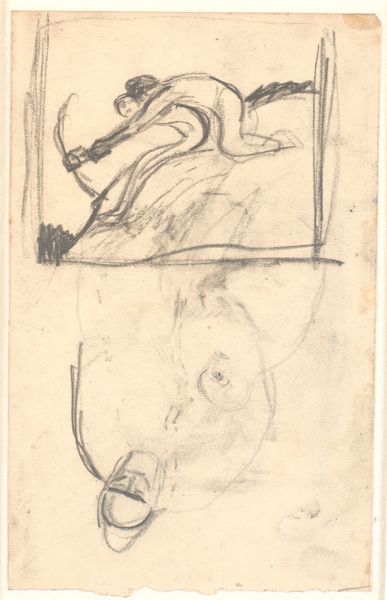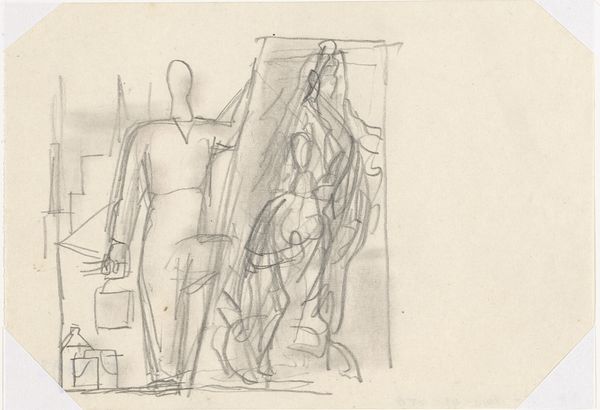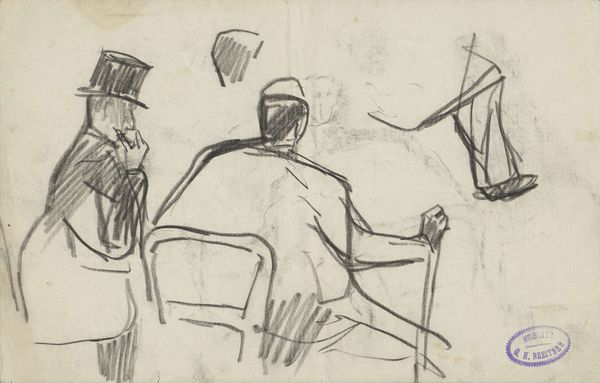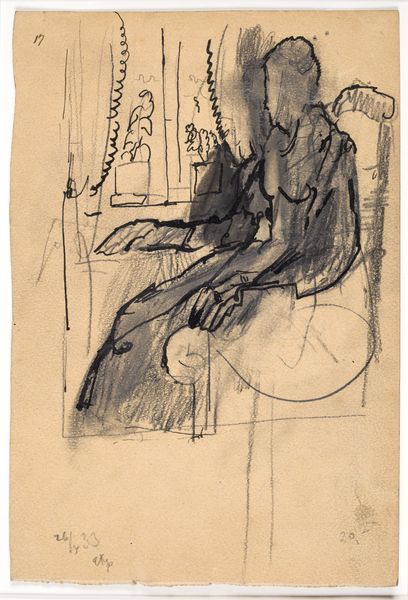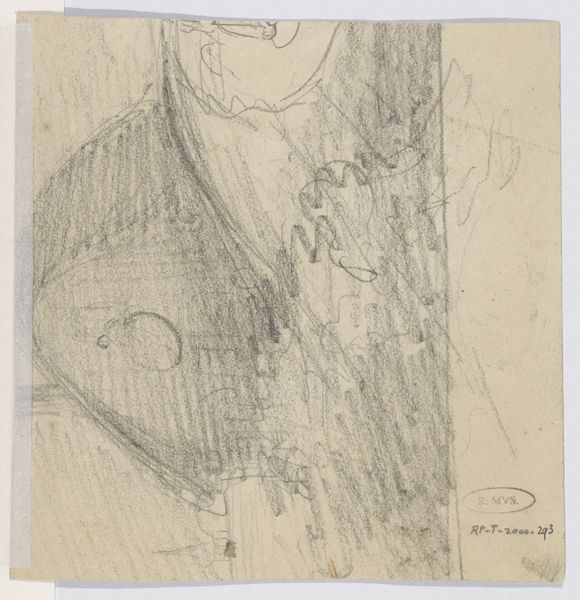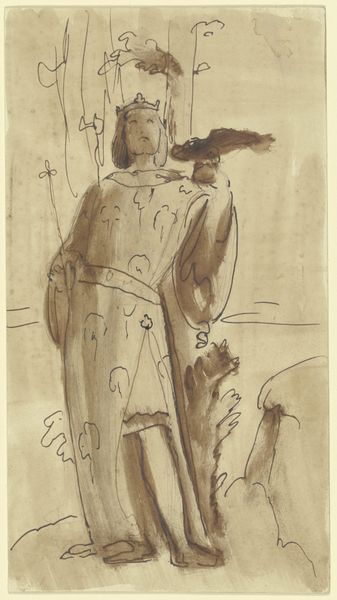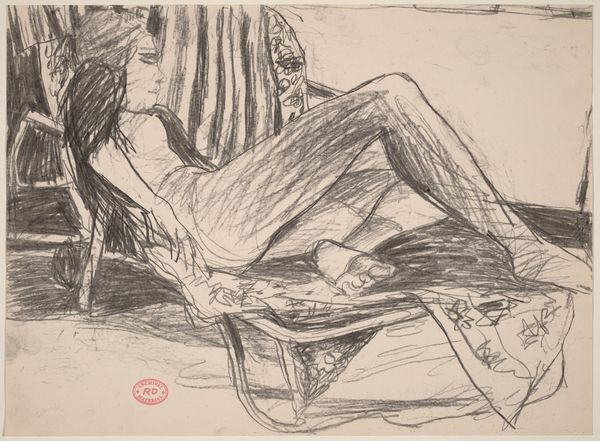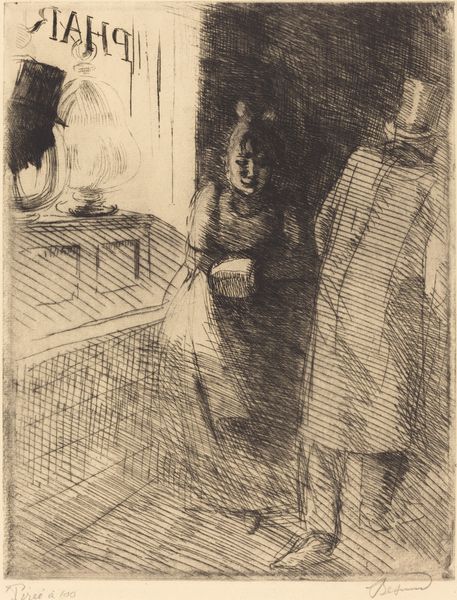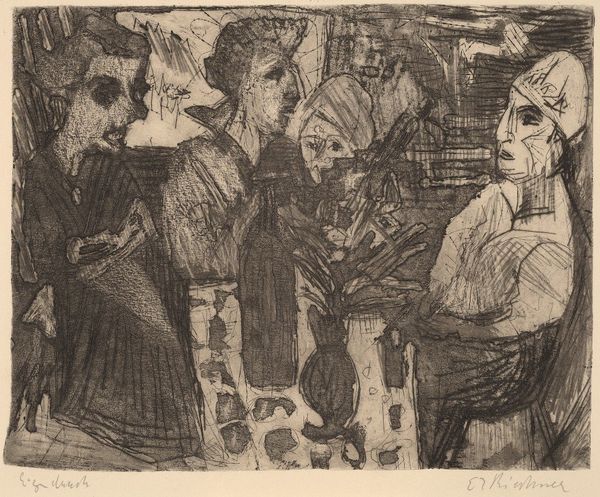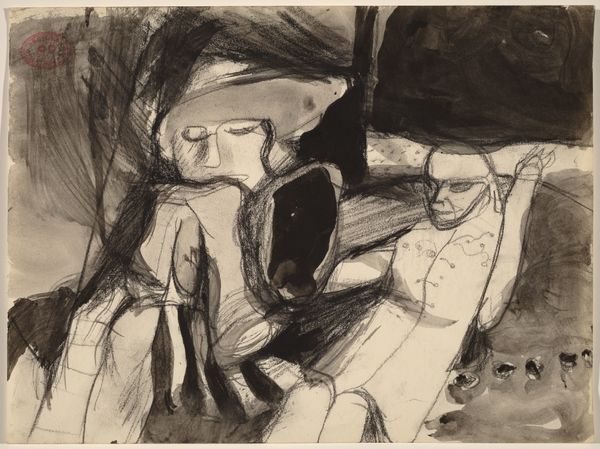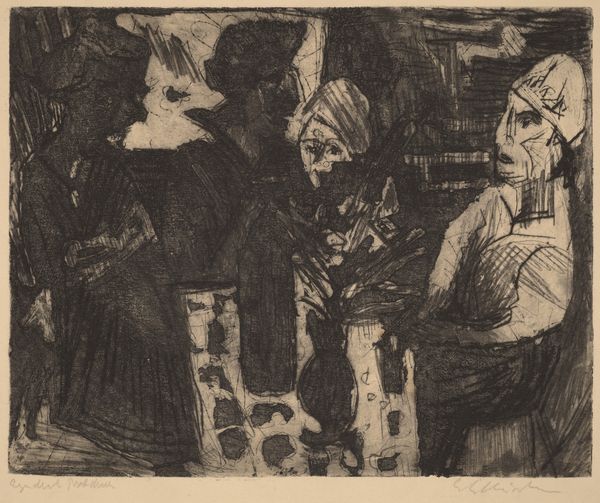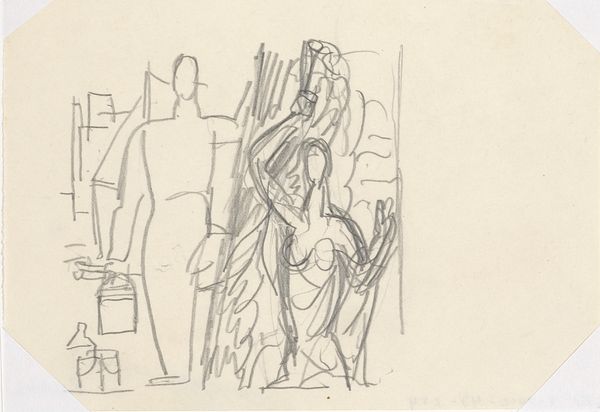
drawing, print, etching
#
portrait
#
drawing
# print
#
etching
#
german-expressionism
#
figuration
#
line
Dimensions: image: 16.5 x 19.1 cm (6 1/2 x 7 1/2 in.) sheet: 29 x 35 cm (11 7/16 x 13 3/4 in.)
Copyright: National Gallery of Art: CC0 1.0
Editor: Here we have Ernst Ludwig Kirchner’s 1921 etching, *Peasant and Girl*. It strikes me as oddly tense. The figures seem isolated even though they’re occupying the same space. How do you interpret this work? Curator: The tension hums right off the page, doesn’t it? Kirchner's line work, so frantic and raw, really captures the anxieties simmering beneath the surface of post-war Germany. That stark contrast between the earthy tones of the seated peasant and the almost spectral blue of the girl, for me, creates a sense of unease, as if she is merely a memory or ghostly apparition. What feelings do the colors evoke in you? Editor: Definitely a feeling of disquiet. The blue figure almost blends into the background like she is disappearing. Curator: Precisely. Consider, too, the figures' gaunt features, emphasized through Kirchner’s linear style, which convey hardship and a loss of vitality. Are they disconnected, or does that tension hint at an untold story between them? The deliberate roughness feels emotionally charged, right? Like the artist is forcing us to feel the weight of their world. It reminds me of a passage from Rilke where he talks about finding beauty in the grotesque... Editor: I hadn't considered it from a postwar perspective, or as a form of beauty. That definitely gives me something to think about. Curator: Art is transformative in its ability to reshape our perspective and evoke contemplation. I believe Kirchner has achieved that and has a story to tell, it just needs someone willing to listen, or in this case look, beyond the surface. I will look at Expressionism with a fresh eye going forward.
Comments
No comments
Be the first to comment and join the conversation on the ultimate creative platform.
